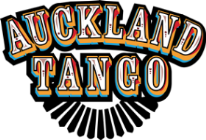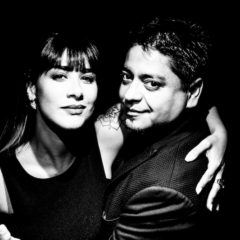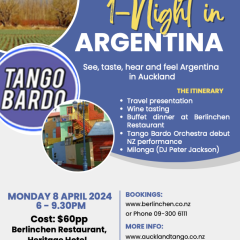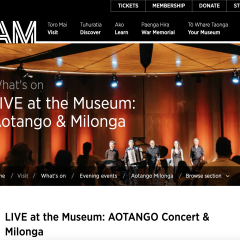Stu's Tango Musicality Workshop
The notes below are intended for participants in one of my Tango musicality workshops
Intro
I get a lot of joy listening to groups of musicians who are all really locked in together, playing creative music with precise rhythms and seamless interaction, and even more joy playing in such groups. At the other extreme, it’s hard listening to bands playing out of tune and out of time with each other in a largely uncoordinated way, and bloody awful when I’m a member of such a band.
The impact is not dissimilar when I watch tango dancers whose dancing is imaginative and highly aligned with both music and partner. The pleasure peaks when it is my partner and me who are at one with the music. Conversely, the dancing can be unforgettable for all the wrong reasons if there is conflict and incompatibility between partners and / or the music; especially if fancy or cliched sequences are being performed that have no relationship at all to the music.
That said, there is rarely any one right way to dance tango with good musically. This is because tango dance is an improvised dance form, and the music tends to be so multi-layered and full of subtleties that there are unlimited opportunities for different interpretations by dancers.
Recognising danceable tango music
What key aspects of music make it recognisable as tango music and make it so danceable?
- 4 or 8 beat patterns / phrases in claves
- steadiness of an underlying compas
- repetitive structure of sections
- repetitive phrases
- frequently used rhythms like habanara, “3-3-2” and “Derecho viejo”
- absence of swing rhythms
- absence of other dance genre rhythms (like vals, milonga, salsa, cha cha, swing, reggae, etc.)
- melodies, chords and harmonies in “minor” modes with some “major” contrast sections
- cliched resolutions of phrases and songs
- recognisable core instrumentation of bandoneon, violin, bass, piano or guitar, and voice
- emotional delivery of Spanish lyrics
- recognisable core repertoires and orquestas of DJs, teachers and maestro performers
- subtleties by progressive orquestas and musicians (pauses, fraseo, triplets, etc)
Over time, an at least gradually increasing awareness and familiarity with these and other features of tango music will contribute to improving the musicality in our tango dancing. Nobody should expect to understand and recognise everything that does or can happen in tango music, not even those who spend their whole lives listening, playing or dancing to tango music. There is always something new that can be learnt.
Different approaches by teachers
There are many different ways musicality teachers choose to teach musicality, with the only rule they seem to have in common being that nearly all steps should match the compas, or a sound, or beat or accent that can be heard from the music. Joaquin Amenabar has been very successful teaching dancers to dance to accents of vocalists, while others have focused on the compas, on different rhythmic patterns or the sounds and rhythms of one instrument at a time.
WORKSHOP 1 - Saturday 20 November
The first ideas I want to share are those that I believe to be the most important for tango dancers, specifically:
- Identifying then walking to the compas (and knowing this can work as a musical dancing “default”)
- Recognising musical phrases within music sections, and thinking about changing and resolving dance steps and sequences to align with them
- Identifying double time and half time rhythms then stepping in simple or more complex ways to align with them
- Adopting a framework for practicing dance musicality, for creating dance patterns that align with the music, and for testing whether good musicality is being achieved
WORKSHOP 2 - Saturday 27 November
I plan to start the second workshop with a review of what was covered last week including a quick recap of the practice framework and a walk through of a song or two to the compas, then double time and half time rhythms. This will be an opportunity for last week’s participants to demonstrate things learnt and practiced.
This week I intend to focus on:
- Walking to phrases that have syncopations and that mix double and half time rhythms.
- Executing different stepping options for legato and staccato phrases.
- Exploring possible musical dancing responses to the three most common ways orquestas begin phrases.
- Adapting the practice framework for music that adopts other than the most common “square structure”.
Stu










Leave a Reply